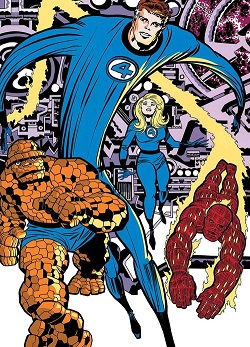
The Fantastic Four is a superhero team appearing in American comic books published by Marvel Comics. The team debuted in The Fantastic Four #1, helping usher in a new level of realism in the medium. It was the first superhero team created by artist/co-plotter Jack Kirby and editor/co-scripter Stan Lee, and through this title that the "Marvel method" style of production came into prominence.
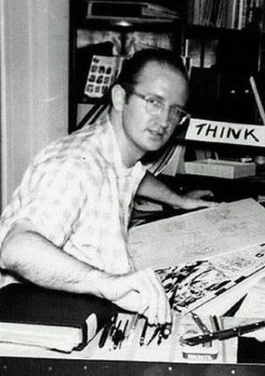
Stephen John Ditko was an American comics artist and writer best known for being co-creator of Marvel superhero Spider-Man and creator of Doctor Strange. He also made notable contributions to the character of Iron Man with the character's red and yellow design being revolutionized by Ditko.
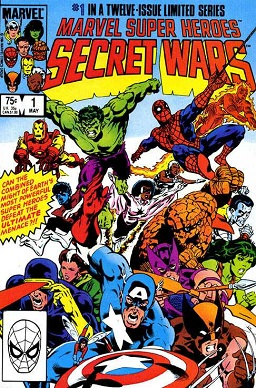
Marvel Super Heroes Secret Wars, commonly known as Secret Wars, is a 12-issue American comic book crossover limited series published from May 1984 to April 1985 by Marvel Comics. The series was written by Jim Shooter, with art by Mike Zeck and Bob Layton. It was tied in with a toy line and a role-playing game of the same name from Mattel.

Dr. Stephen Vincent Strange is a character appearing in American comic books published by Marvel Comics. Created by Steve Ditko, the character first appeared in Strange Tales #110. Doctor Strange serves as the Sorcerer Supreme, the primary protector of Earth against magical and mystical threats. Strange was introduced during the Silver Age of Comic Books in an attempt to bring a different kind of character and themes of mysticism to Marvel Comics.
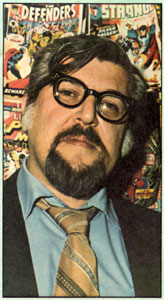
John Buscema was an American comic book artist and one of the mainstays of Marvel Comics during its 1960s and 1970s ascendancy into an industry leader and its subsequent expansion to a major pop-culture conglomerate. His younger brother Sal Buscema is also a comic book artist.
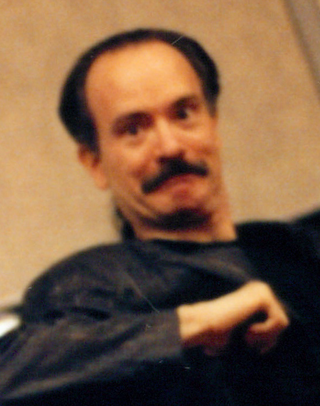
Mark Eugene Gruenwald was an American comic book writer, editor, and occasional penciler known for his long association with Marvel Comics.

Ultimate Marvel, later known as Ultimate Comics, was an imprint of comic books published by Marvel Comics, featuring reimagined and modernized versions of the company's superhero characters from the Ultimate Marvel Universe, later known as the Ultimate Universe. Those characters include Spider-Man, the X-Men, the Ultimates, the Fantastic Four, and others. The imprint was launched in 2000 with the publication of the series Ultimate Spider-Man and Ultimate X-Men in 2001, followed by The Ultimates and Ultimate Fantastic Four in 2002 and 2004 respectively providing new origin stories for the characters. The reality of Ultimate Marvel is designated as Earth-1610 as part of the Marvel Comics Multiverse.
Strange Tales is a Marvel Comics anthology series. The title was revived in different forms on multiple occasions. Doctor Strange and Nick Fury, Agent of S.H.I.E.L.D. made their debuts in Strange Tales. It was a showcase for the science fiction/suspense stories of artists Jack Kirby and Steve Ditko, and for the groundbreaking work of writer-artist Jim Steranko. Two previous, unrelated magazines also bore that title.
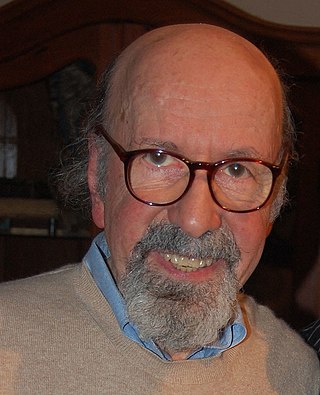
Lawrence D. Lieber is an American comic book artist and writer best known as co-creator of the Marvel Comics superheroes Iron Man, Thor, and Ant-Man; for his long stint both writing and drawing the Marvel Western Rawhide Kid; and for illustrating the newspaper comic strip The Amazing Spider-Man from 1986 to September 2018. From 1974 to 1975, he was editor of Atlas/Seaboard Comics. Lieber is the younger brother of the late Marvel Comics writer, editor, and publisher Stan Lee.
Marvel Adventures, formerly Marvel Age, was an imprint of Marvel Comics intended for younger audiences, including small children. Unlike the standard comics published by Marvel, which often take place in story arcs spanning several issues, each Marvel Adventures comic tells a standalone story. In April 2012 it was replaced by all new All Ages line tied to the Marvel Universe block on Disney XD.

Herbert William Trimpe was an American comics artist and occasional writer, best known as the seminal 1970s artist on The Incredible Hulk and as the first artist to draw for publication the character Wolverine, who later became a breakout star of the X-Men.
The Alley Award was an American annual series of comic book fan awards, first presented in 1962 for comics published in 1961. Officially organized under the aegis of the Academy of Comic Book Arts and Sciences, the award shared close ties with the fanzine Alter Ego magazine. The Alley is the first known comic book fan award.
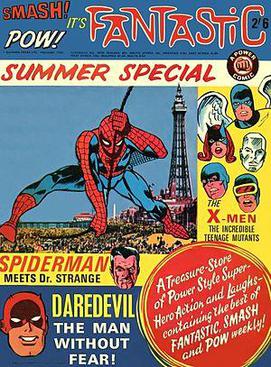
Fantastic was a weekly British comic book magazine published by Odhams Press under the Power Comics imprint. It first appeared on 18 February 1967, and with its 52nd issue on 10 February 1968 it merged with its sister title Terrific. The 89th and final issue of Fantastic appeared on 26 October 1968, after which it was merged into its sister title Smash!.
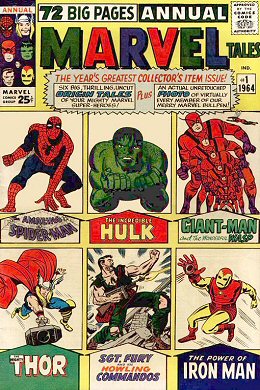
Marvel Tales is the title of an American comic book series published by Marvel Comics from 1964 to 1994 and a flip magazine series published Marvel Comics by from August 2005 to February 2007. Both series primarily reprinted Spider-Man stories.

Marvel Collectors' Item Classics was an American comic book series published by Marvel Comics in the mid- to late-1960s that marked the first reprinting of many of the earliest Marvel stories. Primarily focused on the Fantastic Four, Iron Man, Doctor Strange, and the Hulk, it ran 22 issues before changing its name and page-count, becoming Marvel's Greatest Comics.

Stan Lee was an American comic book writer, editor, publisher, and producer. He rose through the ranks of a family-run business called Timely Comics which would later become Marvel Comics. He was the primary creative leader for two decades, leading its expansion from a small division of a publishing house to a multimedia corporation that dominated the comics and film industries.
Bob Larkin is an American comics artist primarily known for his painted covers for Marvel Comics' magazine-format titles Marvel Magazines in the 1970s and early 1980s and for his 32 painted covers on the Bantam Books paperback reissues series of the Doc Savage pulp novels.
Marvel Fireside Books were a series of full-color trade paperbacks featuring Marvel Comics stories and characters co-published by Marvel and the Simon & Schuster division Fireside Books from 1974 to 1979. The first book, 1974's Origins of Marvel Comics, was very successful, and inspired a series of annual sequels.

Fantastic Four is the name of several comic book titles featuring the team Fantastic Four and published by Marvel Comics, beginning with the original Fantastic Four comic book series which debuted in 1961.
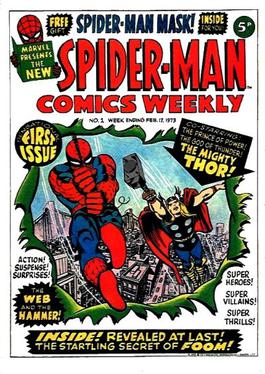
Spider-Man Comics Weekly was a Marvel UK publication which primarily published black-and-white reprints of American Marvel four-color Spider-Man stories. Marvel UK's second-ever title, Spider-Man Comics Weekly debuted in 1973, initially publishing "classic" 1960s Spider-Man stories.















